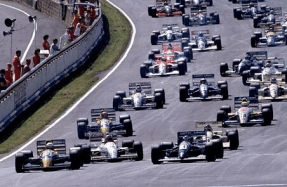
In the last issue, we delved into the world of control systems, explaining how they work, the difference between open and closed loop, and uncovered how to maximise the performance of control loops. In this follow-up feature, we’re going to walk through the types of control systems you can find on a modern racecar and how teams exploit them to achieve faster lap times.
‘Nowadays there are really two main stages to developing a racecar,’ says Angus Lyon, director of Rockfort Engineering. ‘The first is designing and putting together the parts such as the engine, gearbox, motors, electrical systems and bodywork. But, once you’ve done that, you have a car that can’t really do much. It’s the integration of the control systems and the software strategies that then makes the car come alive.’
Motor control
One of the most complicated control systems on a racecar is that which controls the motor. The electric units now used in championships such as Formula 1 and Formula E, as well as most automotive applications, are of the three-phase, permanent magnet type. Typically, they consist of a stationary stator surrounding a rotating rotor. The stator is made up of multiple teeth, which have copper coils wound round them. When an alternating current is applied to the coils, the stator produces a rotating magnetic field.
[Automotive electric] motors have become so complex that they can no longer be controlled by simply varying the input current

In an induction motor, this rotating magnetic field induces an electric current in the rotor via electromagnetic induction, causing it to rotate and generate torque. Whereas in a permanent magnet motor, magnets are located on the rotor. The rotating magnetic field of the stator effectively attracts and repels the magnetic field of the rotor, generating rotational motion.
All quite straightforward, then, except these motors have become so complex that they can no longer be controlled by simply varying the input current. It is also necessary to phase the magnetic field of the magnets on the rotor as well.
Consequently, the most






